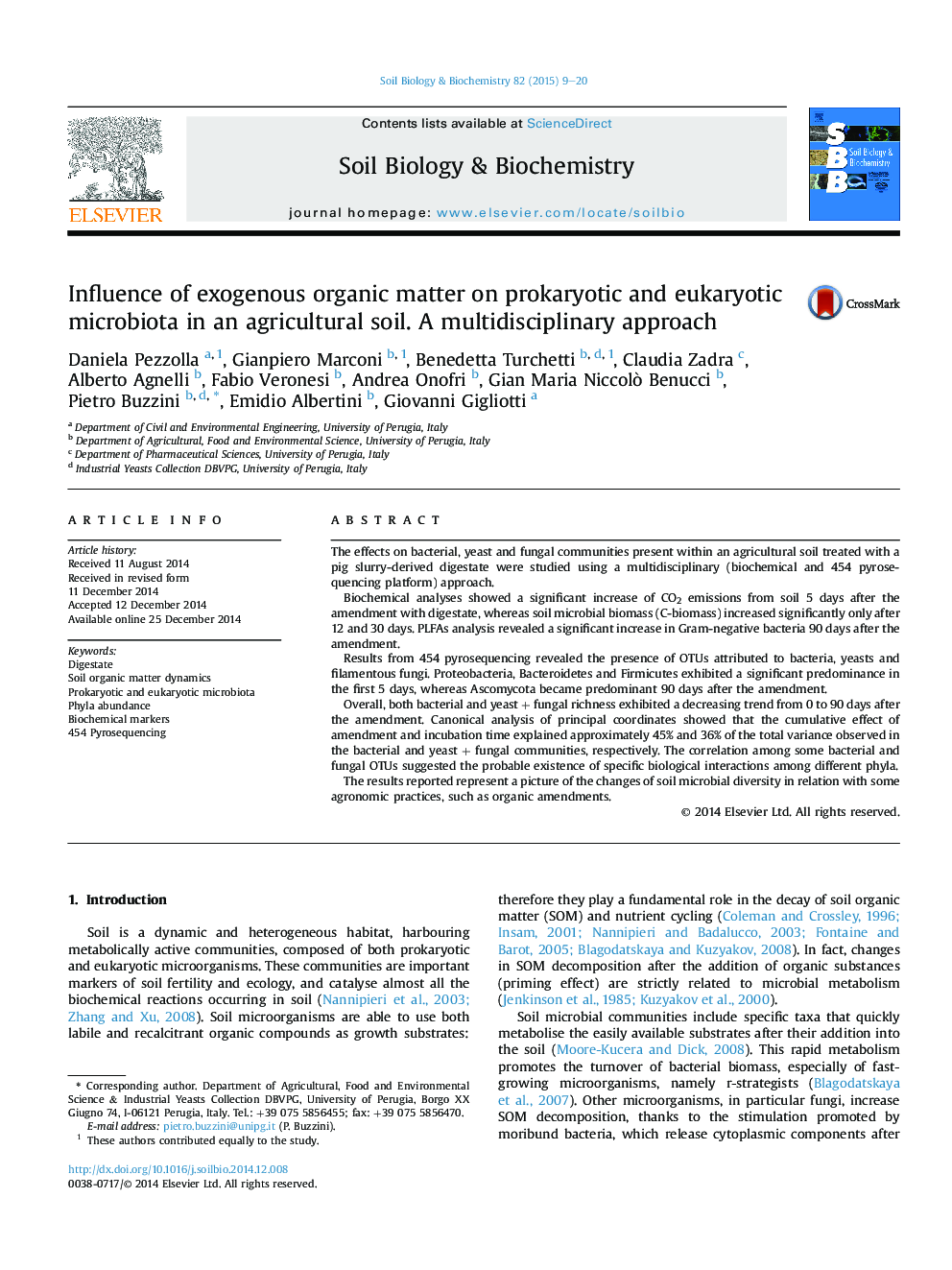| کد مقاله | کد نشریه | سال انتشار | مقاله انگلیسی | نسخه تمام متن |
|---|---|---|---|---|
| 2024475 | 1542602 | 2015 | 12 صفحه PDF | دانلود رایگان |
• An early increase of CO2 emissions were observed after soil amendment.
• Gram-negative bacteria exhibited a long-term increase after soil amendment.
• Proteobacteria, Bacteroidetes and Firmicutes predominated in the early stages.
• Ascomycota became predominant 90 days after amendment.
• A few relationships between bacterial and fungal OTUs were found.
The effects on bacterial, yeast and fungal communities present within an agricultural soil treated with a pig slurry-derived digestate were studied using a multidisciplinary (biochemical and 454 pyrosequencing platform) approach.Biochemical analyses showed a significant increase of CO2 emissions from soil 5 days after the amendment with digestate, whereas soil microbial biomass (C-biomass) increased significantly only after 12 and 30 days. PLFAs analysis revealed a significant increase in Gram-negative bacteria 90 days after the amendment.Results from 454 pyrosequencing revealed the presence of OTUs attributed to bacteria, yeasts and filamentous fungi. Proteobacteria, Bacteroidetes and Firmicutes exhibited a significant predominance in the first 5 days, whereas Ascomycota became predominant 90 days after the amendment.Overall, both bacterial and yeast + fungal richness exhibited a decreasing trend from 0 to 90 days after the amendment. Canonical analysis of principal coordinates showed that the cumulative effect of amendment and incubation time explained approximately 45% and 36% of the total variance observed in the bacterial and yeast + fungal communities, respectively. The correlation among some bacterial and fungal OTUs suggested the probable existence of specific biological interactions among different phyla.The results reported represent a picture of the changes of soil microbial diversity in relation with some agronomic practices, such as organic amendments.
Journal: Soil Biology and Biochemistry - Volume 82, March 2015, Pages 9–20
